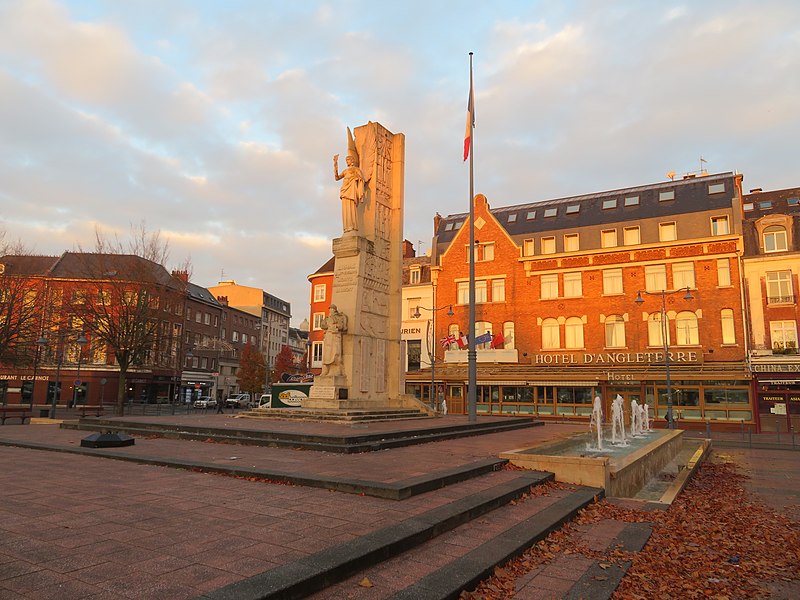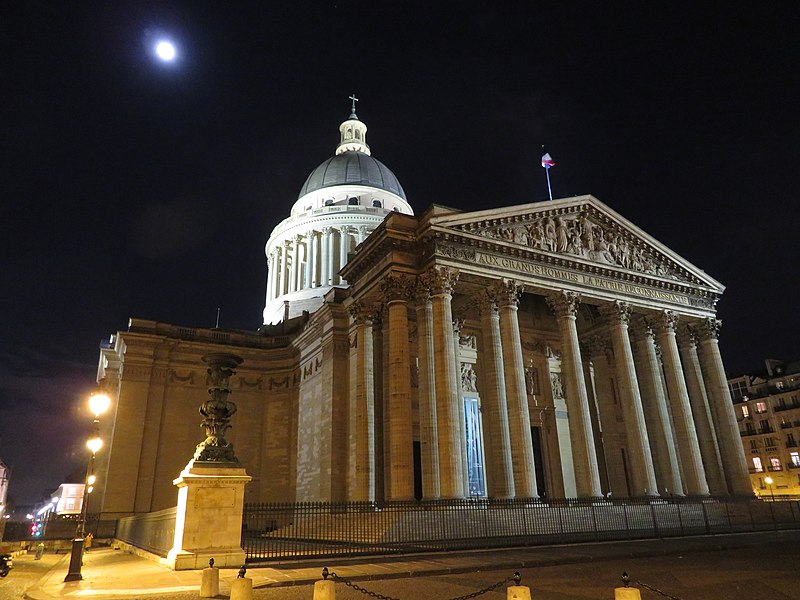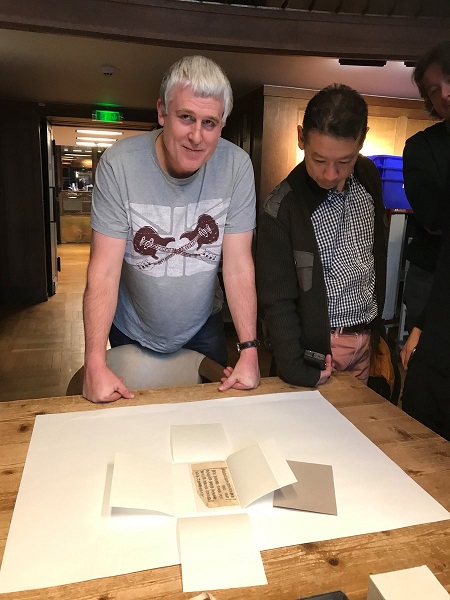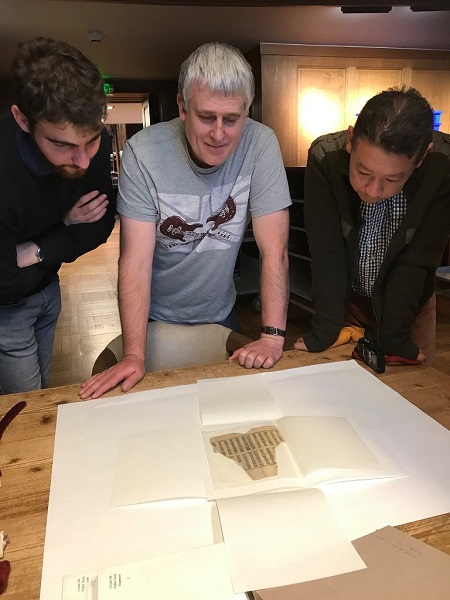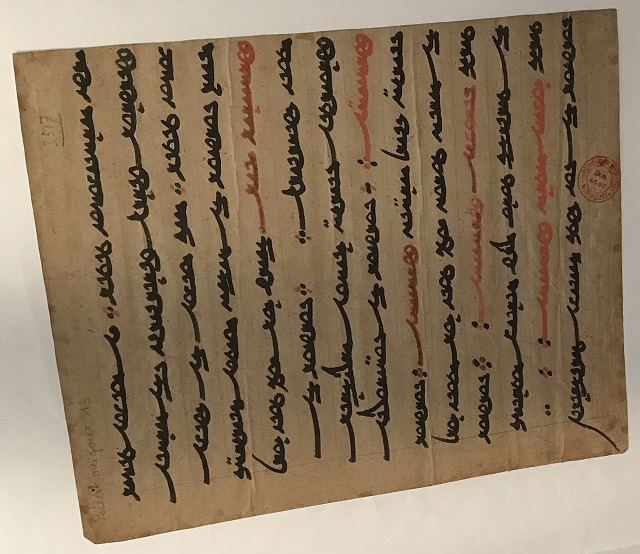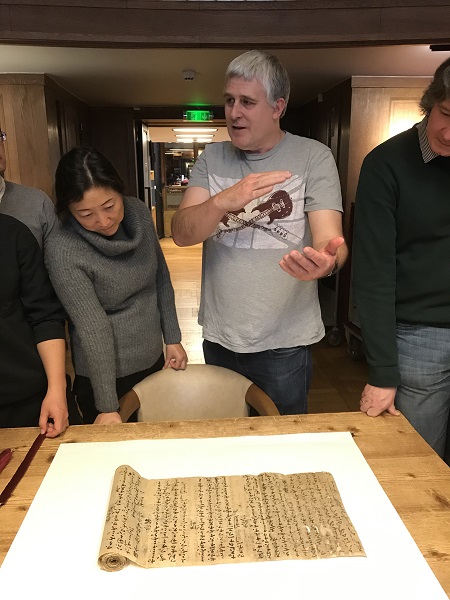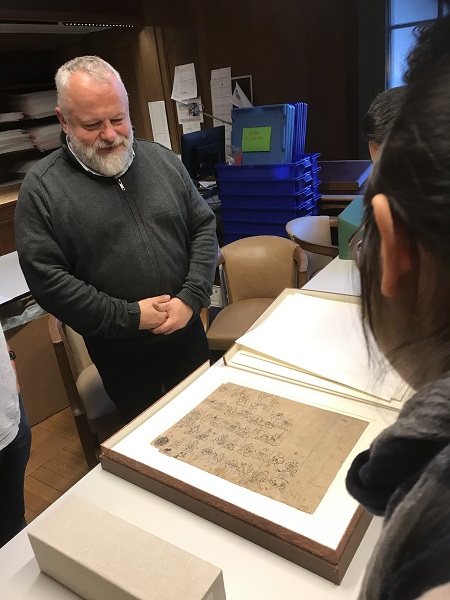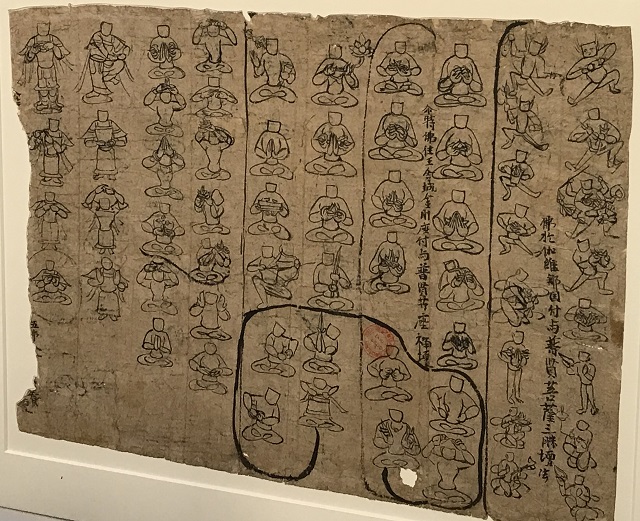Diary of a Rambling Antiquarian
Saturday, 24 November 2018
Bibliothèque nationale de France
I arrived in France on Thursday for a two-day Tangut conference («Rencontre de Tangoutologie»), the fifth in an almost annual series of gatherings of mostly European Tangutologists that started in 2013, and which have been held in London (April 2013), Cambridge (September 2014), Hamburg (December 2015), and London again in 2017 (but I did not attend that one). The meetings have gradually increased in size and ambition, and this year for the first time the meeting is to be held over two days in two locations.
Place du Maréchal Foch in Arras on Friday morning
We gathered at the Gare du Nord in Paris on Thursday afternoon, and all travelled together by train to Arras where we stayed the night. The next day the first session of the meeting was held at the Université d'Artois, and in the afternoon we travelled back to Paris by train. In Paris we are staying at a hotel near the Panthéon, which has a sign by the door proclaiming that Sigmund Freud lived here from 1885 to 1886.
The Panthéon in Paris on Friday evening
The second session of the meeting was held this morning at the École normale supérieure, and after lunch our host, Romain Lefebvre, takes us on an expedition to the Bibliothèque nationale de France, where Laurent Hericher, the Chief Curator of the Oriental manuscripts division, kindly allows us to examine some Tangut fragments and other treasures. I had accidentally left my camera at the hotel in the morning, and then I leave my reading glasses in the library cloakroom, so I arrive ill-equiped for our treat in a backroom of the Oriental manuscripts division. Luckily for me, my good friend Tai Chung-pui saved the day by taking many wonderful photographs on my behalf, which I present with immense gratitude below.
Prof. Arakawa Shintarō and me looking at an unidentified Tangut dhāraṇī
Looking at an unidentified gāthā from a fragment of a Tangut printed text
Fragment of a Tangut text printed using movable type
Notice the uneven inking, irregular size, and ragged layout of characters, which are distinctive features of movable type printing.
Fragment of an Old Uyghur manuscript from the Pelliot collection
Pelliot ouigour 13 (previously Pelliot chinois 3517)
Le mot burxan, comme les noms βı̊ročan et Ločana, ainsi que deux points dans chaque groupe de quatre points servant de ponctuation, figurent partout à l'encre rouge, parfois surchargée sur de l'encre noire pâle (Texte en ouigour)
By far the most exciting moment of my visit to the library came when I saw this scroll being unrolled, and I immediately recognised it as the unique Tang dynasty manuscript of pipa lute notation for 25 tunes.
Explaining the musical notation on the Pipa manuscript
Excitedly expounding on the Chinese Pipa
I have long been interested in pipa notation, and discuss the notational system used in this manuscript in my 2012 blog post One to Twenty in Jurchen, Khitan and Lute. More recently I submitted a preliminary proposal to encode this system of musical notation in the Unicode Standard (WG2 N4848). Less than a month ago I posted a picture of this very manuscript in a long thread about the pipa/biwa lute in medieval China and Japan but I never imagined in my wildest dreams that I would ever get to see it in person! After studying Tangut for ten years, today was the first time I have ever had an opportunity to see an original Tangut text in person (and not behind a glass screen in a museum) so my visit to the BnF today has seen the fulfillment of a long-held wish. However, there are many thousands of Tangut texts in collections around the world. On the other hand, this single manuscript scroll is the only surviving Tang dynasty manuscript that preserves complete tunes in pipa musical notation so seeing it was a thousand times more exciting!
To finish off, here are two sheets of practice drawings of Buddhist figures in various poses from the Pelliot collection.
Laurent Hericher, the Chief Curator of the Oriental manuscripts division
Drawings of Buddhist figures in various poses
Index of Rambling Antiquarian Blog Posts
Rambling Antiquarian on Google Maps
